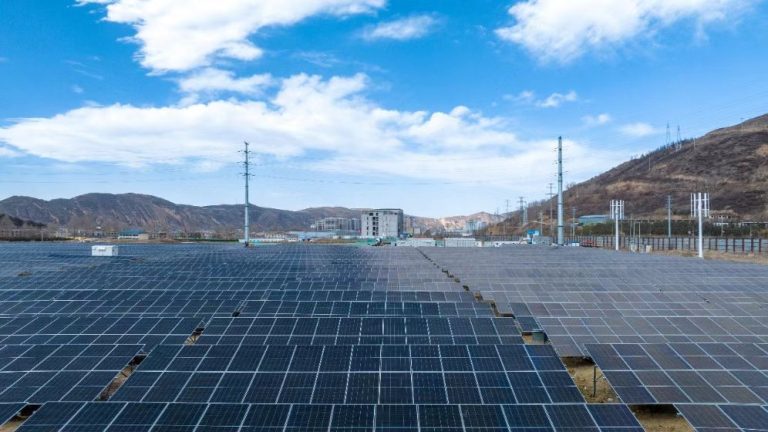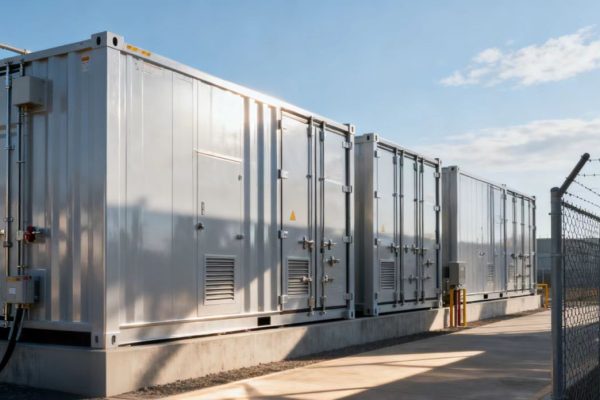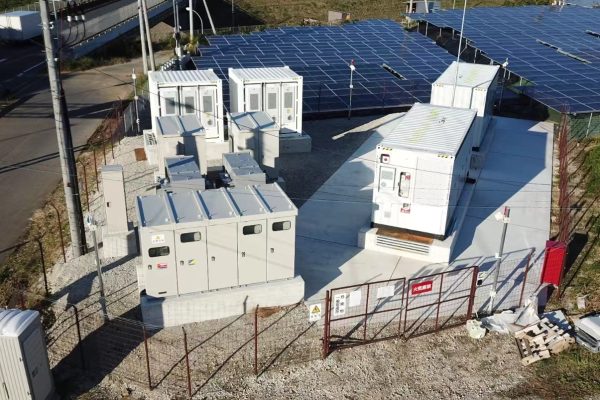Hybrid solar systems have become one of the most flexible energy solutions for both residential and commercial users. They combine the best features of on-grid and off-grid systems — allowing solar panels, batteries, and the utility grid to work together for stable and efficient energy supply.
However, one common question from customers and installers is:
Can a hybrid system run without a grid connection at all?
The short answer is yes — but with important conditions. In this article, we’ll explore how hybrid systems operate, what happens when the grid is disconnected, and what you need to consider if you want to use a hybrid inverter in off-grid mode.
1. What Is a Hybrid System?
A hybrid solar system integrates three key components:
- Solar PV array – generates power from sunlight
- Battery storage – stores excess energy for later use
- Hybrid inverter – manages energy flow between solar, batteries, loads, and the grid
The inverter is the “brain” of the system. It continuously monitors demand, solar production, and grid availability to decide how to distribute energy.
When connected to the grid, the hybrid system can:
- Feed excess solar power back to the grid (net metering)
- Charge batteries from solar or grid power
- Provide backup power during outages (if supported by design)
This combination makes hybrid systems highly efficient and versatile.
2. Hybrid vs. Off-Grid: Key Differences
Before discussing grid-independent operation, it’s important to understand the difference between hybrid and off-grid systems.
| Feature | Hybrid System | Off-Grid System |
|---|---|---|
| Grid Connection | Normally connected to utility grid | No grid connection |
| Inverter Type | Hybrid inverter (grid-interactive) | Off-grid inverter |
| Operation Mode | Prioritizes solar and battery; uses grid as backup | Relies fully on solar and battery |
| Backup Function | Short-term power during outages | Continuous power supply |
| Typical Use | Urban/suburban homes, small businesses | Remote areas, island applications |
In short, hybrid systems are grid-interactive, while off-grid systems are grid-independent.
However, modern hybrid systems are increasingly designed with off-grid capability, allowing them to operate autonomously when the grid is unavailable.
3. Can a Hybrid System Operate Without the Grid?
Yes — if the hybrid inverter supports standalone or off-grid mode.
Many high-quality hybrid inverters can run loads directly from solar and battery power, even when there is no grid connection. In this mode, the inverter functions much like an off-grid inverter, using internal control logic to maintain voltage and frequency for local loads.
Typical Operating Sequence (Grid Disconnected):
- Solar panels generate DC power.
- The hybrid inverter converts it to AC to supply local loads.
- Excess solar energy charges the batteries.
- During the night or cloudy periods, the batteries discharge to power the load.
- If both solar and battery are insufficient, the system enters a low-power standby or auto-shutdown mode to protect the battery.
Once the grid returns, the inverter automatically synchronizes back and resumes hybrid operation.
4. Conditions Required for Grid-Independent Operation
Not all hybrid systems can function properly without a grid. To ensure stable operation, the following conditions must be met:
a. Inverter Capability
Only hybrid inverters with a built-in off-grid mode or islanding function can supply power without a grid.
Look for specifications like:
- “Supports off-grid operation”
- “Grid-forming capability”
- “Backup output” or “EPS (Emergency Power Supply)”
Brands that use transformerless or grid-following designs may not maintain stable voltage without a grid reference.
b. Sufficient Battery Capacity
When disconnected from the grid, the battery becomes the energy anchor of the system.
It must:
- Provide stable DC voltage for inverter operation
- Supply power during periods of low solar generation
If the battery capacity is too small, the inverter may frequently shut down or restart, leading to unstable power.
A good rule of thumb is to size the battery for at least 1–2 days of average consumption if full off-grid capability is desired.
c. Proper System Configuration
When running without grid connection, all system components — PV array, inverter, and batteries — must be properly configured. Key setup points include:
- Enabling off-grid mode in the inverter settings
- Setting battery discharge limits and SOC thresholds
- Configuring load priority (e.g., critical vs. non-critical loads)
- Ensuring adequate cooling and ventilation for continuous inverter operation
Professional commissioning is essential for safety and stability.
5. Hybrid System Modes: Explained
Modern hybrid inverters typically offer multiple operating modes to handle different scenarios.
| Mode | Grid Status | Power Source | Description |
|---|---|---|---|
| Grid-Tied Mode | Grid available | Solar + Grid + Battery | Normal operation; can export to grid |
| Backup Mode (EPS) | Grid outage | Battery + Solar | Supplies backup loads during outage |
| Off-Grid Mode | No grid at all | Battery + Solar | Operates standalone indefinitely |
| Force-Charging Mode | Grid available | Grid → Battery | Pre-charge battery for backup or night use |
For true off-grid operation, the inverter must remain stable in Off-Grid Mode indefinitely, not only for temporary backup.
6. Design Tips for Running Hybrid Systems Off-Grid
If you plan to run a hybrid system without a grid connection — either temporarily or permanently — careful design is key. Here are some practical recommendations:
1. Select a Hybrid Inverter with Proven Off-Grid Capability
Choose models that are certified for UL 9540 / IEC 62109 and specify off-grid or standalone operation. Some hybrid inverters only support short-term backup (a few hours), while others are designed for continuous off-grid use.
2. Use LFP (LiFePO₄) Batteries
LFP batteries are ideal for hybrid systems due to:
- High cycle life (>6000 cycles)
- Excellent thermal stability
- Safe high-power discharge capability
- Compatibility with most hybrid inverters
Ensure the BMS communicates properly with the inverter through CAN or RS485 protocols.
3. Prioritize Critical Loads
In off-grid mode, the system should only power essential loads — lighting, communication, control systems, or key appliances.
Non-critical equipment like HVAC or heavy machinery can remain grid-dependent or switched off.
4. Include System Protections
Use AC/DC circuit breakers, surge protection, and proper grounding to prevent inverter or battery damage during transient events.
5. Consider a Generator Input
Some hybrid systems support AC input from generators for backup charging. This can provide an additional safety net in extended cloudy weather or winter seasons.
7. Common Issues When Running Without the Grid
While hybrid systems can operate off-grid, improper setup may lead to the following problems:
- Inverter Shutdown: due to insufficient battery voltage or inverter overload.
- Voltage Instability: if inverter lacks strong grid-forming capability.
- PV Curtailment: solar input stops when battery is full and no load is connected.
- Reduced Efficiency: frequent charge/discharge cycles increase battery wear.
These issues can be avoided through correct system design, software settings, and component matching.
8. When to Use Hybrid vs. True Off-Grid Systems
If you plan permanent off-grid operation, an off-grid inverter system may still be the better choice.
However, hybrid systems are perfect when:
- You expect occasional grid outages
- You want to export power when connected
- You need backup functionality but also grid interaction
In other words:
- Hybrid = flexibility
- Off-grid = independence
For remote sites, small commercial users, or residential customers in semi-urban areas, a hybrid system with off-grid capability offers the best of both worlds.
9. Summary Table: Hybrid System Without Grid
| Feature | Supported in Off-Grid Mode? | Notes |
|---|---|---|
| Solar generation | ✅ | PV can directly power loads and charge battery |
| Battery operation | ✅ | Required for stable voltage regulation |
| Grid feed-in | ❌ | Not possible without grid |
| Critical load backup | ✅ | Through EPS or backup port |
| Full load supply | ⚠️ | Depends on inverter power rating |
| System monitoring | ✅ | Cloud or local app monitoring continues if Wi-Fi or GSM available |
Yes, a hybrid solar system can run without a grid connection — but only if it’s designed and configured properly.
With the right inverter, sufficient battery capacity, and smart energy management, a hybrid system can operate in standalone mode to power essential loads day and night.
For small businesses, farms, and rural households, this flexibility makes hybrid systems a cost-effective bridge between grid-tied convenience and off-grid independence.
As inverter technology continues to advance, modern hybrid systems are no longer limited to backup operation — they can now deliver continuous, stable off-grid performance, bringing true energy freedom to users around the world.









